Best sellers: Our top 10 tractors of the noughties
Modern tractors are getting ever more complex, with layers of electronic controls, fancy touchscreens and a medley of soot-stifling gizmos to keep exhaust emissions in check.
When the tractor is new and protected by a manufacturer’s warranty, this is all well and good. But by the time these models filter down to smaller farms, there’s just more to go wrong.
And while most makers offer simpler, stripped-down ranges, there’s no getting away from the AdBlue systems, EGR valves and DPFs, all of which come with strings attached.
See also: Handy checklist for buying a second-hand tractor
The result is that popular tractors built before this era have reversed the typical trend of steady depreciation.
Values are rising significantly, with some tidy examples on low hour counts changing hands for near their new price.
Helped by Somerset-based used tractor specialist Richard Parris and a host of other industry experts, we’ve grouped together 10 of the most popular noughties tractor models and noted how their values have changed over the past five years.
A note on prices
The prices we’ve included are estimates for tidy, high-spec tractors with about 4,000 hours on the clock.
Models with less desirable spec levels, higher hour counts, and rougher overall condition can still be found for considerably less money than we’ve quoted. Equally, exceptional examples that have done very little work could be priced higher.
Here they are, in no particular order.
Take our poll at the end to find out which is the most popular tractor among our readers.
Fendt 820
Cramming 200hp into a relatively compact and lightweight package, Fendt’s 820 Vario is still able to hold its own against much more recent models. In fact, the engine and transmission are the same base units as used on the current 700-series tractors.
As a result, values remain strong and good second-hand examples are snapped up quickly. The only problem is that it’s becoming increasingly difficult to find any that aren’t on ridiculously high hours.
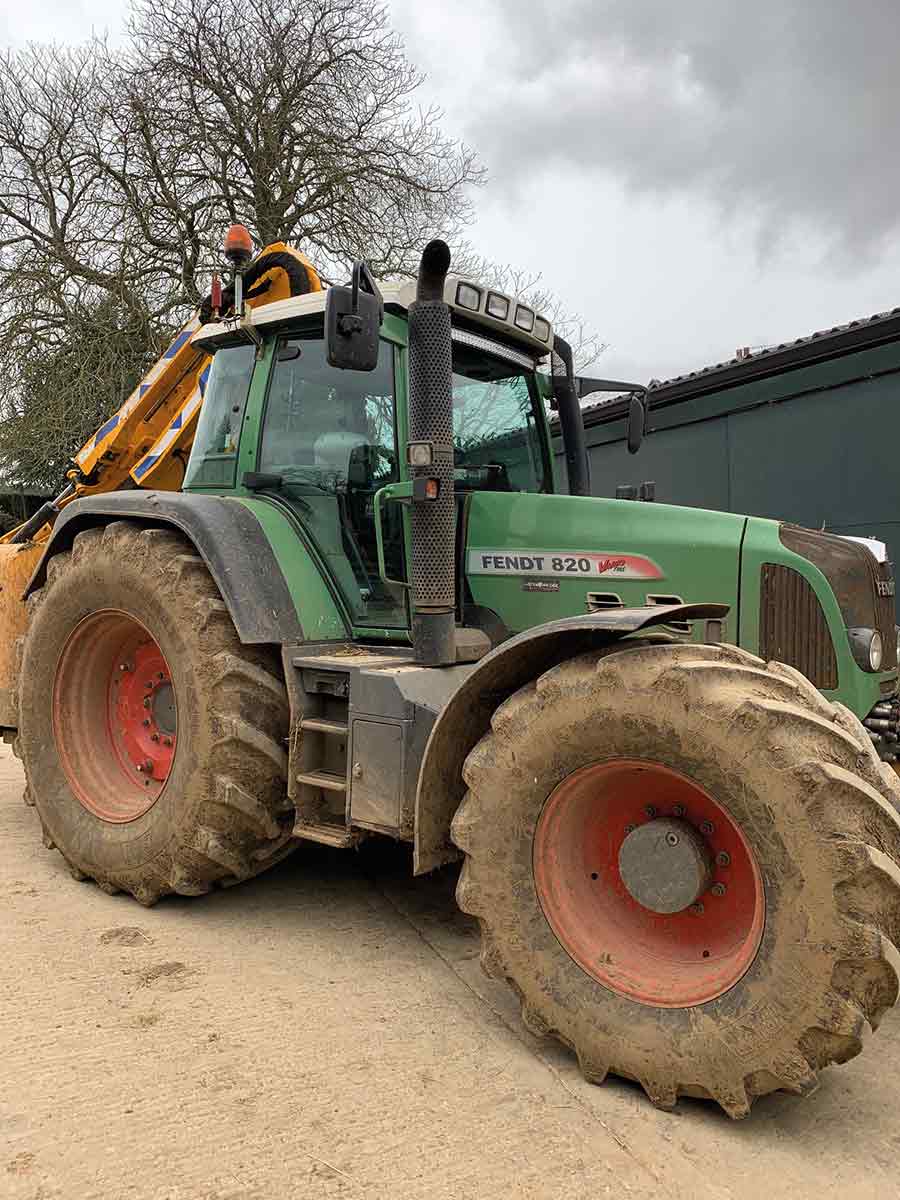
© James Andrews
The model was launched in 2006 as a replacement for the 818 but, slightly confusingly, it had the same underpinnings as the “smaller” 718.
The only differences were with some of the specs and the fact that the 6.1-litre Deutz engine was tuned to 205hp.
Early examples of the 718 delivered just 168hp, so the 820 was a relative powerhouse in comparison.
As the tractor came out in the mid-2000s, the engine had to meet Stage 3 emissions regulations, which it did with a cooled exhaust gas recirculation system (EGR).
This has been known to cause problems on tractors that spend a lot of their time on tick-over, but isn’t much of a concern for those that are well worked.
The Vario transmission is great from a driver’s point of view, although it does have a reputation for costly repairs.
If looked after and driven considerately it can run to very high hours. And if it does go wrong, it isn’t the end of the world to fit a reconditioned unit.
Fendt built the 820 for five years and replaced it with the new 700-series tractors in 2011.
Value five years ago: £45,000
Value now: £55,000*
* Sub 5,000-hour examples are hard to find, so this figure is for tractors that have done slightly more work
Massey Ferguson 6480
Massey Ferguson’s ubiquitous 6480 had a lengthy build run – 2004 to 2012 – but it saw a significant amount of change during that time.
All models are popular second-hand workhorses, but those at the beginning and end of the series are most sought after – for different reasons.
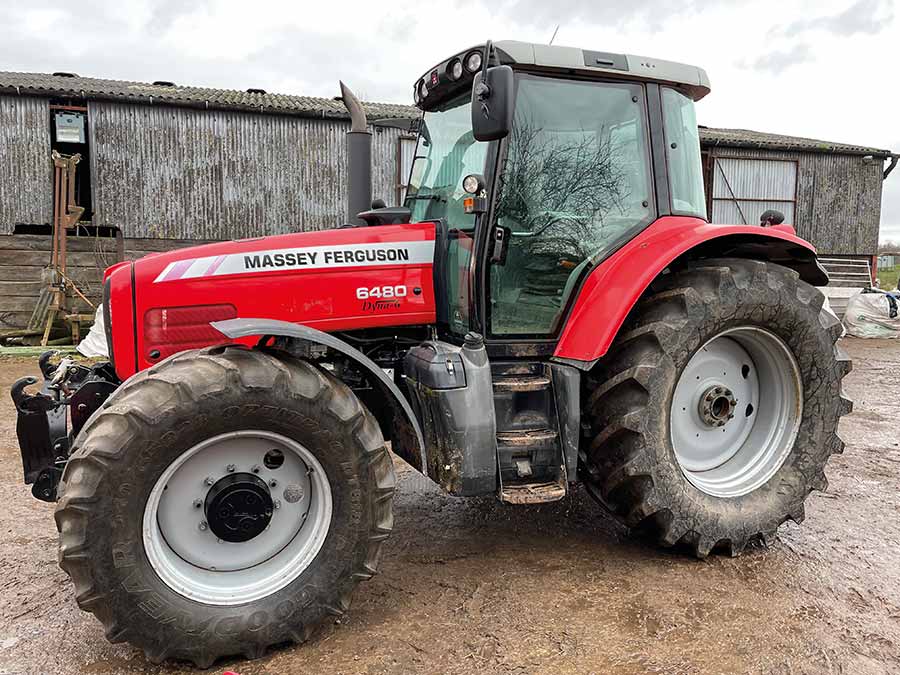
© James Andrews
Early versions are simple, solid workhorses that have a lot in common with the 6290 that went before. This means they have a Stage 2, 6-litre Perkins 1106 six-cylinder engine that develops about 145hp.
It is allied to a Dynashift gearbox which, with four powershift steps and a splitter, delivers a total of 32 speeds.
The first significant change came in 2005, with a switch to the more complex Gima Dyna-6 transmission. This has six powershift steps and four mechanical ranges, giving a total of 24 speeds.
The changes are also robotised, negating the need for a mechanical gearstick.
In 2007, the engine was upgraded to Stage 3 and a 50kph version of the Dyna-6 was introduced.
Styling was updated too, and the engine was given a boost function that took power up to 172hp for pto and transport work.
Tractors with the Perkins/Dyna-6 combination are popular, but the engine can give trouble, most of which is linked to the oil pump.
Around the end of the decade, Massey Ferguson began introducing the 6.6-litre six-cylinder Sisu engine, which became standard fitment from 2010.
This delivers a similar power output to the later Perkins, but it’s tougher and rarely gives any problems.
As a result, these are the tractors of choice for those wanting a workhorse that will keep up with modern alternatives.
Value five years ago: £33,000
Value now: £38,000
John Deere 6930 Premium
John Deere’s 6930 Premium has had its fair share of problems but, in the 15 years since its launch, most of these have been sorted.
It’s now considered a light, powerful and dependable outfit that can hold its own against bigger, heavier rivals. As a result, tidy examples are in very high demand and prices are going up.

© James Andrews
All tractors came with Deere’s 6.8-litre, six-cylinder engine that delivers 155hp, boosting to 180hp for pto and transport work.
Plenty have been chipped so that they’re running at or above that boosted power all the time.
Production began in 2007 at Deere’s factory in Mannheim, Germany, and continued until 2012, and there was relatively little change over that time.
As a result, hours and condition should have a bigger bearing on price than the model year.
Most popular are tractors fitted with the 50kph version of Deere’s tried-and-tested AutoQuad transmission. This has five mechanically shifted ranges with four powershift splits in each, giving a total of 20 gears.
Unlike the more basic PowrQuad version used in lesser ranges, it offers automatic changing of the powershift steps and speed matching. It’s very rare for it to give trouble.
The ZF-supplied stepless AutoPowr transmission was also available on this model, but it is less desirable. This is largely due to failures on earlier tractor ranges, which were sorted by the time it was fitted to the 30-series.
Still, there is more scope for trouble than there is with the mechanical box.
The 6930’s main foibles are head-gasket failure, which is largely solved by fitting uprated 5F head bolts. The cooled exhaust gas recirculation (EGR) system can also give some problems, but these are easily remedied.
Also popular are the larger-frame 7530 models, which have a rated power of 180hp and max power of 195hp.
Value five years ago: £45,000
Value now: £53,000
Case IH MX135
The MX135 was one of the last Doncaster-built Case IH tractors before the firm’s merger with New Holland, and it was a good ‘un.
So much so, that owners tend to hang on to them, and tidy examples on the second-hand market tend to get snapped up quickly. If a tidy one does go up for sale, it usually gets snapped up quickly.

© James Andrews
Production started in 1996 – alongside the smaller MX110 and MX120 – and ran until 2002, when the factory was taken over by McCormick. Case then replaced it with the MXM, which was a rebadged New Holland TM.
Power is provided by a tough and gutsy 5.9-litre turbo-charged Cummins six cylinder that develops 140hp and 565Nm torque.
The transmission is equally dependable, with four mechanical ranges and four clutchless powershifts, giving a total of 16 forward and 12 reverse gears, or 32/24 if fitted with a creep box. Road speed is capped at 40kph.
These tractors are simple and there are few problems to watch out for, other than the usual wear and tear.
Occasionally, engines have been known to drop a valve, and the odd one has trouble with the torsion damper between the engine and gearbox, but it’s pretty rare.
In 1998, the MX135 was joined by two larger models – the MX150 and MX170. These have the same 5.9-litre Cummins engine, tuned to 151hp and 166hp respectively.
To handle the extra ponies, the chassis was elongated, and a beefier back end was fitted, adding about 2t to the overall weight. Both models are sought after, but they don’t have such broad appeal as the more compact MX135.
Value five years ago: £18,000
Value now: £24,000
Valtra 6550 HiTech
In the days before Agco ownership, Finnish firm Valtra specialised in simple, rugged tractors with no-frills mechanical transmissions.
The brand only had a small market share in the UK then, but the tractors have such a good reputation for reliability that demand remains strong and prices stay high.
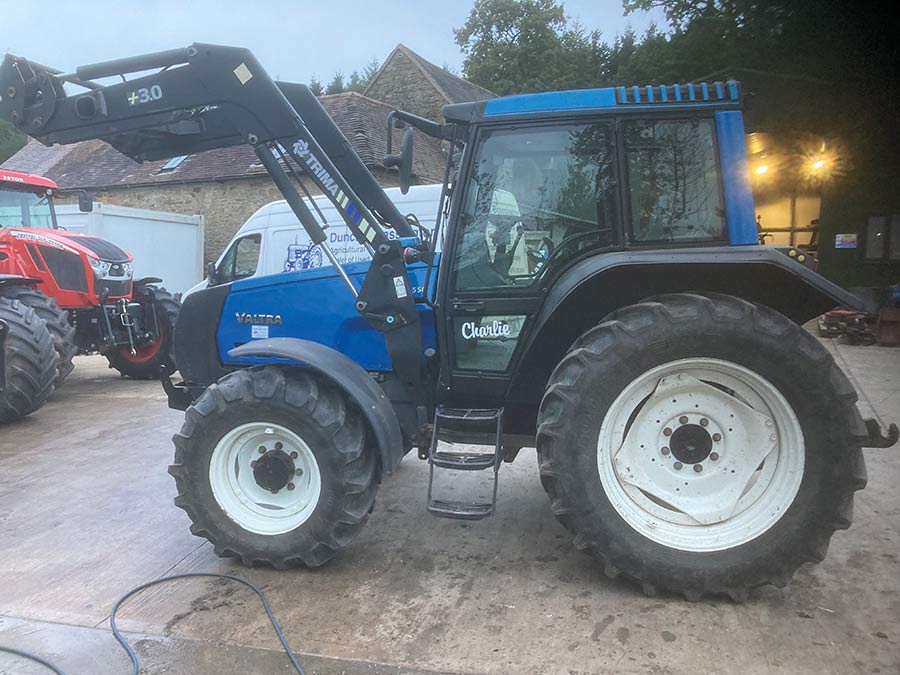
© James Andrews
When the four-cylinder 6050 HiTech series was launched in 2004, the company had dropped the Valmet name and it was under Agco ownership.
But the tractors were still of Finnish design and very similar to the previous 6050 range that ran from 1998 to 2003.
The 6550 HiTech is the second largest tractor in the line-up, below the 123hp 6850, but it has the same 4.4-litre, four-cylinder Sisu engine that’s detuned to 103hp.
This drives the firm’s HiTech semi-powershift transmission, which has four gears in three ranges with a three-speed powershift, giving a total of 36 ratios in forwards and reverse.
They’re not the most sophisticated tractors, but the appeal is in the bomb-proof reliability and simple maintenance.
These models were made for just two years, before they were superseded by the N-series, which are also in demand.
Six-cylinder 8050 tractors from the same era are very popular, too. These achieve similar, if slightly higher, values than their four-cylinder, but they were only built until 2002, when the T-series came in.
Value five years ago: £22,000
Value now: £28,000
Deutz-Fahr Agrotron 165.7
When Deutz-Fahr launched the Agrotron in 1995, its bubble-shaped cab and sloping bonnet gave it a wildly futuristic appearance that wasn’t to everyone’s taste. The electrics were also a little ahead of their time.
But once the Agroton New came out in 2004, the looks had softened, the electrics were sorted, and the mechanicals were rock solid. Buyers have now cottoned onto this and it’s getting harder to find them.
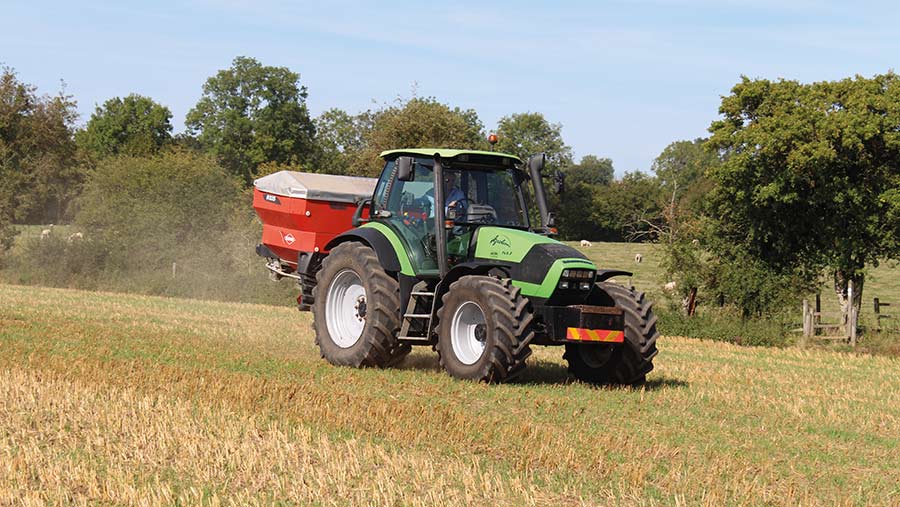
© James Andrews
The 165.7 is arguably the pick of the bunch, featuring a big 7.1-litre Deutz engine that’s tuned to put out 160hp.
This, combined with an efficient 24-speed semi-powershift transmission, plus a creeper box, means they pull like a train and have very little to go wrong.
Top speed is 50kph and they came with a high standard spec that includes air brakes.
The only downsides are that they have a weak air conditioning system, the cab is a bit noisy and some slightly questionable ergonomics. But for those that prioritise power and reliability over driver comfort, there’s little to dislike.
Also popular is the smaller 150 model that was available with the same 7.1-litre engine or a smaller six-cylinder unit that produced a bit less torque. Buyers can tell which one is fitted by the .6 or .7 after the model number.
At the larger end of the spectrum, there’s the Agrotron 180.7, which also has the 7.1-litre engine, this time tuned to 180hp.
Production continued until 2007 when the range was replaced by the less successful Agrotron M. These were fitted with a 6.1-litre Deutz power plant, as used by Fendt.
Value five years ago: £25,000
Value now: £32,000
JCB Fastrac 2170
Early JCB Fastracs were not easy to live with. Heavy, dry clutches, an awful steering lock, and some questionable wiring meant they had limited appeal.
However, by the mid-2000s, the firm had come up with a formula that worked.
The 2155 and 2170 were the last Fastracs to feature a mechanical transmission and they matured into a solid and versatile tractor that’s in high demand.
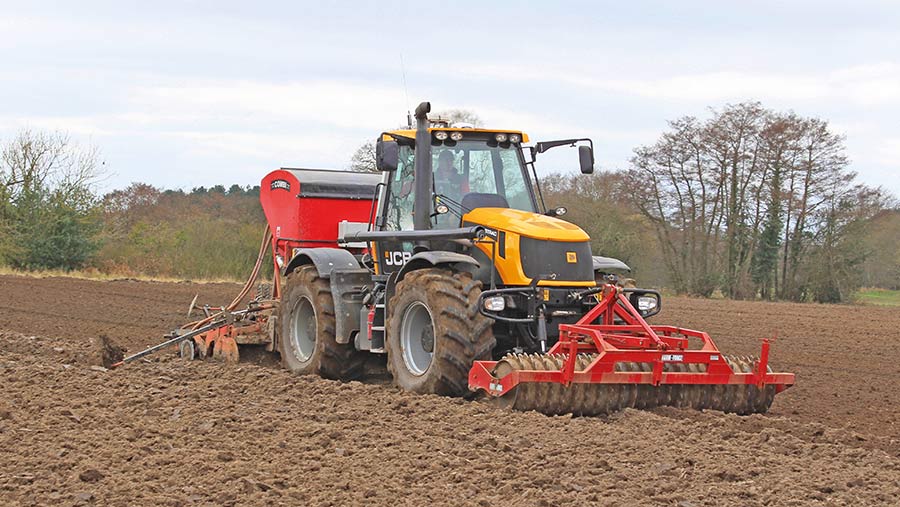
© James Andrews
Both models are identical, save for engine ECU mapping, which gave the 2155 160hp and the 2170 171hp. However, most have been tampered with over time so that they deliver considerably more power than stock.
The reason for this is the tractors are fitted with a 6.7-litre Cummins QSB engine that’s simple and tough as old boots.
Unlike many tractors of this era, it has a basic fixed-geometry turbo and little in the way of emissions-reducing paraphernalia. The only nod to modernity is the common-rail injection system.
Just one transmission option was available – an Eaton-Fuller truck gearbox box featuring six gears with three splitters, which is mated to a three-speed JCB range box. Drivers have to do a lot of shifting to get the most from it, but it has plenty of ratios and it’s reliable.
The Smoothshift clutch is also a considerable improvement over the old dry versions, both in terms of usability and reliability. Four-wheel steering was optional, and tractors fitted with it will sell for a premium.
The main things buyers need to watch out for are worn and abused running gear, as many of these tractors have been driven hard on road work and bounced along rough tracks at speed.
The paintwork is also notoriously poor, so most will need some touching up to keep them looking tidy.
The tractors had a seven-year production run before being replaced by the 4000 series.
Value five years ago: £47,000
Value now: £52,000
John Deere 7820
The appetite for US-built John Deere tractors from the 2000s is stronger than ever, with the venerable 7810 top of many buyers’ wishlists.
This 175hp workhorse features Deere’s iconic 8.1-litre Waterloo engine and its reputation for basic, raw power has elevated it to near-mythical status.
It’s no longer simply a working machine, with collectors scrabbling after the best examples and driving up prices.
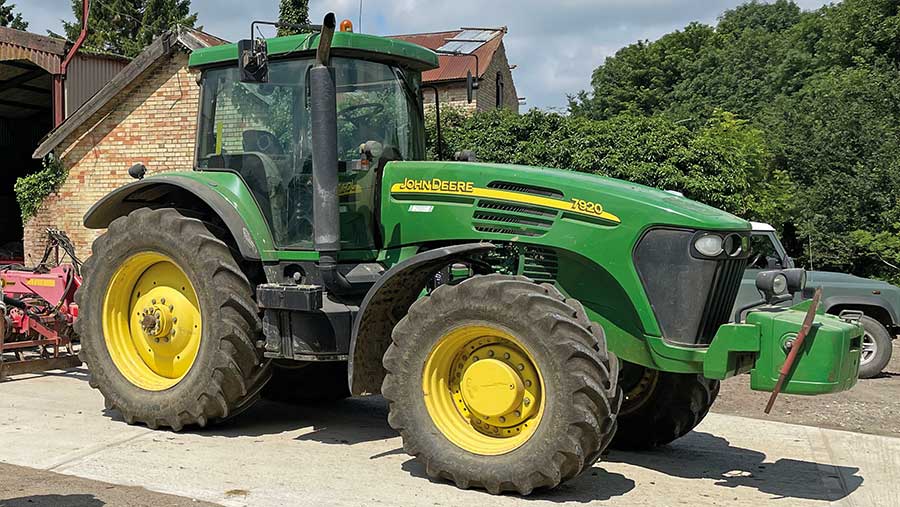
© James Andrews
As a result, some are now turning to its 7020 series successors – particularly the 7820. This tractor has a lot in common with the 7810, including the 8.1-litre engine which has been tweaked to give a maximum power of 197hp in standard form.
Transmission options extended to the simple PowrQuad Plus semi-powershift or AutoPowr CVT. The latter offers infinite ratios and is nicer to drive, but it saps more power and is relatively expensive to fix if it goes wrong.
Some of these tractors were fitted with the firm’s smaller 6.8-litre engine which, despite being a solid performer, is less attractive.
Due to their simplicity, the 7820s give few mechanical problems if properly looked after. The only downside is that they are clumsy compared with some other manufacturers’ offerings in this power category.
The larger 215hp 7920 is also a popular tractor and all of these came with the 8.1-litre engine. However, the fact that it was only available with a CVT transmission makes it slightly less desirable.
The 7020 series had a short build run from 2005-2007 before it was superseded by the 7030 series.
Demand is also strong for these tractors, but they come with the firm’s smaller 6.8-litre engine which, although good, doesn’t have the same desirability as the Waterloo block.
Value five years ago: £40,000
Value now: £45,000
New Holland TS135A
Production of New Holland’s popular TS series started in 1998, with the stand-out model being the range-topping TS115.
Power output was a modest 100hp from the factory, but the hefty 7.5-litre, six-cylinder engine responded well to tuning and many examples are running at considerably higher horsepower.
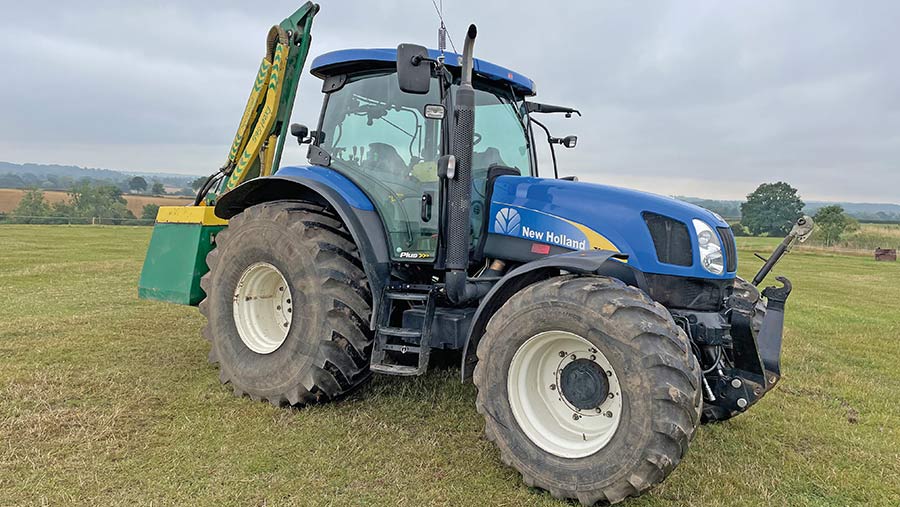
© James Andrews
In 2003, the TS tractors were superseded by the TS-A range, six-cylinder versions of which were fitted with a 6.75-litre NEF engine.
Although smaller in displacement that its predecessor, these engines are tough and feature electronic power management, which gives a considerable performance hike for pto and road work.
The TS135A is the largest tractor in the range, churning out 136hp and rising to 162hp with boost.
Weighing 600kg less than its power equivalent in the larger TM model, these tractors are gutsy little performers capable of running power-hungry kit such as front-and-rear mowers, as well as being well at home with a loader.
A common transmission choice in the TS-A range is New Holland’s 17F/12R Electro Command gearbox, which offers four powershift ratios in four ranges, as well as a separate direct drive gear for road work, allowing 40 or 50kph travelling speeds. All 50kph tractors came with air brakes as standard.
Production ran until 2007, when the T6000 range took over. This also featured the 6.75-litre engine.
Value five years ago: £19,000
Value now: £25,000
New Holland TM155
New Holland introduced the TM range in 2000 to replace its 8000-series tractors, which had been around since the mid-1990s.
These models were only built for two years, before the brand refreshed the range, added a few upgrades and introduced higher-horsepower models such as the TM175 and TM190.
It’s easy to spot them as they have yellow decals on the bonnet.

© James Andrews
One of the most desirable options is the mid-range TM155, which serves up 155hp from its 7.5-litre, six-cylinder engine – the same power plant used in the firm’s early six-cylinder TS tractors.
Buyers had the option of the firm’s Power Command full powershift box or Range Command semi-powershift, the latter being the most popular.
This simple box is efficient and smooth when it’s running well, but it can require frequent calibration to keep it that way.
Early TMs could drop a valve if the tappets weren’t properly adjusted, but these were hydraulic on later tractors like the 155.
Production continued until 2007 when they were replaced by the T7000 series, which used a smaller 6.75-litre FPT engine.
Value five years ago: £25,000
Value now: £30,000
Thanks to the following for helping put this article together
- Richard Parris – Parris Tractors
- Richard Pykett – GR Pykett
- Steve Hodges – independent mechanic
- Lee Morley – independent mechanic
- Matthew Morgan – independent mechanic
- Duncan Brassington – Brassington Agri

